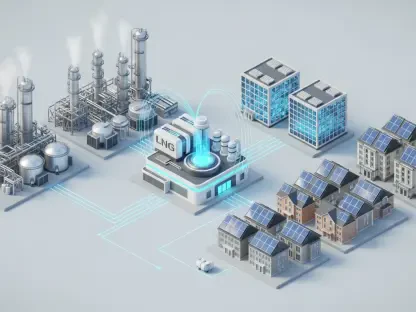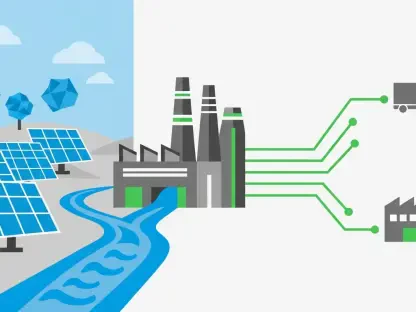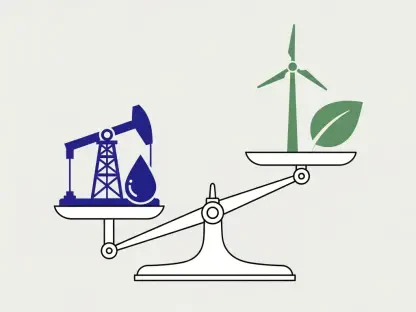The US Department of Energy (DOE) Loan Programs Office (LPO) has played a critical role in advancing the nation’s clean energy agenda, particularly during periods of administrative transition. With a substantial loan authority amounting to an impressive $400 billion, the LPO has been pivotal in financing diverse clean energy projects. The urgency surrounding these initiatives has become more pronounced due to anticipated changes in administration policies, signaling a potentially robust transformation within the sector. This article explores the strategic role of the LPO, recent loan announcements, and the possible implications of an upcoming shift in the administrative landscape.
LPO’s Strategic Finance Role
The DOE’s Loan Programs Office has emerged as a cornerstone in the push to advance clean energy technologies in the United States. Since the appointment of Jigar Shah as the head of the office, the LPO has catalyzed numerous high-profile projects under the Biden-Harris administration. Through substantial financial investments, the LPO has bridged critical financing gaps, helping private sector projects achieve commercial viability. These investments have spanned a wide array of technologies, from advanced nuclear and geothermal energy to advanced fossil energy and critical minerals, underscoring the office’s pivotal role in driving innovation and economic growth.
The significance of the LPO’s contributions to the clean energy sector cannot be overstated. By providing crucial financial backing, the LPO has enabled numerous projects to advance from the conceptual stage to commercial operation—a feat that often wouldn’t be possible without such support. This not only promotes technological progression but also fosters job creation and economic development in various states and communities. As the clean energy landscape continues to evolve, the LPO remains a vital enabler of groundbreaking projects that may otherwise struggle to secure the necessary capital to move forward.
Bridge to Bankability
An essential function of the LPO is its ability to bridge the gap to bankability for clean energy projects. This means providing the necessary financial support to make these projects attractive to private investors, who might otherwise be reluctant to fund unproven technologies. The LPO’s involvement often serves as a mark of credibility, signaling to the market that a project is viable and worthy of investment. This endorsement has been crucial in advancing technologies that might otherwise face significant hurdles in securing funding.
Numerous projects have reaped the benefits of LPO support, including advanced nuclear reactors, innovative battery technologies, and geothermal energy systems. By stepping in where private investors might hesitate, the LPO has enabled projects to reach the stage of commercial viability, thus driving the clean energy transition forward. This bridging of financial gaps has been instrumental in pushing forward a diverse range of technologies that contribute to the broader agenda of reducing greenhouse gas emissions and fostering sustainable energy solutions.
Political Transition Concerns
With an incoming change in administration, there is widespread concern about the continuity of support for clean energy initiatives. DOE spokespersons have voiced anxiety that there could be a potential rollback of investments, which would not only impact the clean energy sector but also disrupt the economic benefits that states and communities currently enjoy from these projects. The unspecified dismantling of ongoing support could significantly hinder the progress made so far, putting at risk the sustainability and economic gains that have been so diligently worked towards.
The anxiety linked to potential policy shifts underscores the fragile nature of policy-driven initiatives in the clean energy sector. The LPO’s recent flurry of activity, including several urgent loan announcements, reflects an effort to stabilize and secure project commitments ahead of the administrative change. These actions suggest a strategic push to ensure that funded projects have the necessary financial guarantees to proceed, safeguarding them against any unfavorable policy reversals that may come with the new administration.
Recent Loan Announcements
In the weeks following the recent US election, the LPO has made significant strides by announcing or progressing several substantial loans. These include nearly half a million dollars allocated for Li-Cycle’s battery recycling project and substantial financial backing for NeoVolta. The LPO’s support for Eos Energy Enterprise’s zinc battery technology and the Puerto Rico solar-and-storage project AES Marahu further highlight its ongoing commitment. Additionally, the LPO has pledged support for the Viejas Microgrid project in California, which incorporates a range of cutting-edge battery technologies.
These loan announcements showcase the LPO’s sustained dedication to promoting clean energy projects. By securing these deals before the administrative transition, the LPO aims to provide a stable foundation for these projects, ensuring they have the requisite support to advance irrespective of potential policy changes. This proactive approach reflects the urgency and importance placed on these initiatives, which are integral to maintaining momentum in the clean energy sector during a period marked by political uncertainty.
Volume of Applications
The LPO’s strong role in the clean energy sector is underscored by the substantial volume of loan applications it has received, totaling around $300 billion. These applications span various sectors, including renewable energy generation, energy storage, nuclear, clean energy technology manufacturing, energy efficiency, and grid modernization. Such an extensive pipeline of applications indicates a robust industry demand for LPO financial support, highlighting the sector’s vigor and the pent-up need for funding to advance clean energy projects.
The large number of applications received by the LPO speaks volumes about its significance in the clean energy landscape. By attracting such a high volume of industry interest, the LPO underscores its critical role in enabling projects that drive innovation and sustainability. This demand for financial support continues to reinforce the importance of the LPO’s mission and underscores the necessity of maintaining robust financial backing for clean energy initiatives in the face of evolving administrative policies.
Increased EIR Budget
Reflecting its commitment to fostering clean energy advancements, the LPO has increased its Energy Infrastructure Reinvestment (EIR) program funding to $244.8 billion. This move is widely perceived as a preparatory step for executing green loans ahead of the administrative change. By adjusting risk profiles of supported projects, the LPO has enabled higher loan authority while remaining compliant with statutory maximum loan guarantees, minus already obligated amounts. This increase in budget ensures that a broad array of clean energy projects have the financial backing required to succeed, despite the looming uncertainty of policy shifts.
The decision to bolster the EIR program’s budget reflects a strategic emphasis on maintaining continuity and support for clean energy projects. This funding increase highlights the LPO’s proactive stance in securing the necessary financial resources, ensuring that these initiatives can withstand potential administrative changes. By positioning itself to execute green loans preemptively, the LPO is safeguarding the progression of diverse clean energy projects that are crucial for achieving long-term sustainability goals.
Commitment to Clean Energy
The US Department of Energy’s Loan Programs Office (LPO) has significantly contributed to pushing forward the nation’s clean energy initiatives, especially during times of administrative changes. With a remarkable loan authority of $400 billion, the LPO has been crucial in funding a wide range of clean energy projects. The urgency of these efforts is heightened by expected shifts in administration policies, indicating a potentially significant transformation in the sector. This article delves into the LPO’s strategic importance, the latest loan announcements, and potential impacts of imminent changes in administration, highlighting the possibility of robust advancements in clean energy under new policies. The LPO’s support for innovative technologies, renewable energy sources, and sustainable practices underscores its essential role in steering the clean energy agenda towards a more resilient and eco-friendly future, emphasizing the importance of continued investment in the sector amidst evolving political landscapes.









